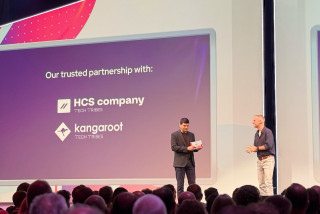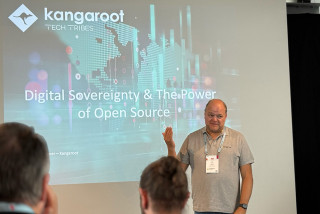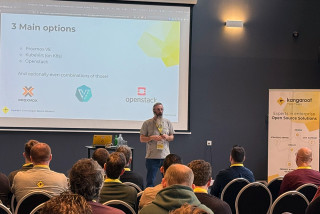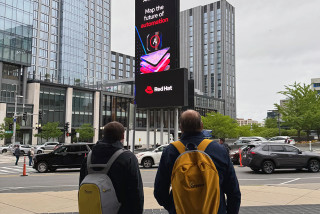Digital innovation thanks to open automation platform
Digital innovation goes hand in hand with an open source automation platform. "That is not only beneficial for the company itself, but also for the IT professionals who get to work with it," says Stef Schampaert (Country Manager Red Hat Belgium & Luxembourg) and Peter Dens (Managing Director of Kangaroot)
How important is automation in the context of innovation?
Schampaert: "Automation is one of the main pillars to help customers in their digitisation process. Here, it gets even more important. But actually automation goes hand in hand with standardisation and innovation. You can not innovate without standardisation and automation. Unfortunately, many companies still have a mix of different automation tools. So usually in those situations they first need to standardise before automation can book results. For that reason, our automation platform Ansible does not work only from the infrastructure layer, but also focuses on the network layer, the application layer and the security layer."
Why is this also beneficial for the IT people of companies?
Dens: “A platform like Ansible ensures a standard within the organisation, which means new IT professionals in the team get started up faster and keep an overview. In addition, organisations with less people in their team, get more work done."
Eventually, the IT team will be able to execute less of those repetitive and boring tasks, and will be able to focus more on new exciting tasks with a greater added value for the company. From the other hand, this will also have a positive impact on attracting and preserving those scarce IT-talents.
Peter Dens, Managing Director of Kangaroot
Schampaert: “IT people will indeed have more time to do innovative things which will have a greater impact on the company as well."
In what sense does automation help to minimise the risk of errors?
Dens: “Today, we live in an economy where you, as a company, have to be online 24/7. So your tools & e-commerce have to be available at all times. There is no time left to take servers offline or disable them for repairs or upgrades. Thanks to standardisation and automation, you can prevent errors already in advance before you upgrade. On a platform like Red Hat Ansible, you can first try these updates in a test environment.
When we think of e-commerce, standardisation and automation can support to quickly scale up when there is a sudden fast growth needed. For example, during Black Friday, Christmas or the 'Sales' period. The additional servers that must be enabled then, can simply be a copy of the existing servers. So here as well, errors are minimised again.”
How does Ansible work as an automation platform?
"Like in a recipe, your IT staff will get a clear overview of how an IT infrastructure looks like and works. That recipe can be easily fine-tuned during the test environment and be updated at any time. Moreover, multiple people at the same time can work at that recipe and the system tracks who uses it and on which machine. You can use those recipes across different systems. And in case something goes wrong after all, you can easily and quickly switch back to the previous recipe."
Schampaert: “Within Ansible we call those recipes "playbooks". These are set up in an easily understandable language and on the other hand they are standardised so that various automations (infrastructure, applications, networks, security, cloud, …) can be easily implemented from this one platform.”
How important is the open source character of Ansible?
As an open source company, Red Hat can collaborate with many companies to automate certain things and collect all those info in an automation hub. In that hub we store all those 'playbooks' from our partners so that every IT professional can immediately use those in their own environment.
Stef Schampaert, Country Manager Red Hat Belgium & Luxembourg
Schampaert: "Also the collaboration between Red Hat and Kangaroot originated from that open source philosophy. After all, Kangaroot was founded to support open source development at companies. So it's a natural collaboration of two companies that are more than 100% focused on open source development.”
Dens: “Our history is indeed running parallel. Kangaroot is now more than twenty years active in the open source world and our first partner back then was Red Hat. They ensure the enterprise readiness of the open source code, while we make sure customers absorb that code by supporting them throughout this process.”
What potential do you still see for Ansible?
Schampaert: “In the future, artificial intelligence will be playing an even more important role within the automation layer of Ansible. In that way Ansible will become more intelligent, automatic, more error-free and predictive.”
Dens: “Many issues have already happened and been resolved before. In the future we can predict and capture these problems in an automated platform, based on preset parameters. In that way IT professionals will have less crisis interventions. So there is indeed still a lot of potential on the level of prediction.”
Source
Text: Joris Hendrickx
Publication: Trends, December 2021 - IT Solutions
Discover how Ansible can support your organisation!
Together with Red Hat, Kangaroot builds your environment that allows you to be the first to innovate, setting up technical processes within your management organisation and support you 24/7 in your business critical applications. Thanks to years of experience we assist you in advising, managing & implementing high-quality technical solutions.







